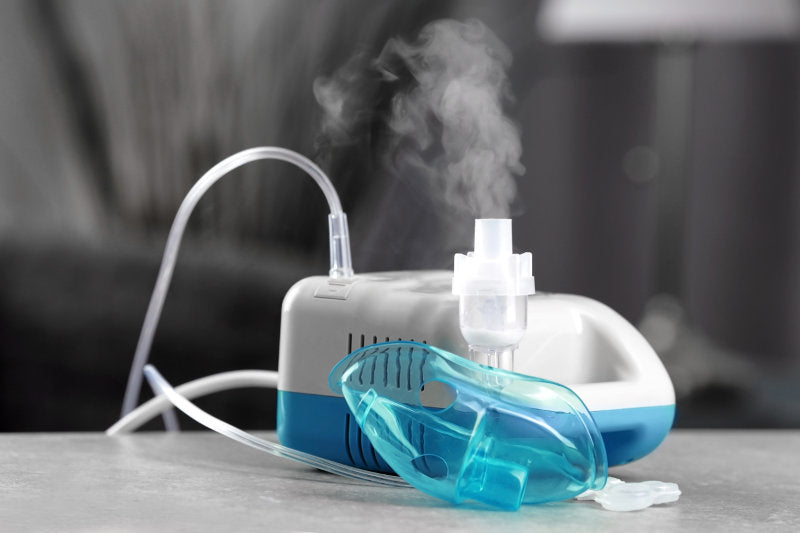Nebulizing: What is it & How it Works

By Dr. Jennifer VanDeWater, PharmD
Integrative Therapeutics Board of the The Wellness Company
Nebulizing is the most natural and direct route for the delivery of medication to the lungs.
Nebulizers are a medical device where a liquid medication is transformed into a mist, vapor, or aerosol which is then inhaled directly into the lungs via mask or mouthpiece.
The pressure generated from the nebulizer converts the liquid into the deliverable form.
When to use a nebulizer
Certain inhalable liquid medications can be mixed via the nebulizer to be administered at one time.
This is a benefit for the patient, especially children, the geriatric population, those suffering an asthma attack or anyone who may be ill.
For patients suffering an asthma attack, the airway is constricting, making deep breaths difficult.
Deep breaths are needed with a hand-held rescue inhaler to deliver the medication into the lungs.
The nebulizer does not require deep breaths making this device a much more effective delivery method.
Benefits of using a nebulizer
Children sometimes have difficulties using a hand-held inhaler, making it uncertain if the medication was appropriately dosed and delivered.
A few noted concerns: did the child take a deep enough breath and hold it long enough for the medication delivery? Did the child close their mouth around the mouthpiece to not have any medication escape?
Using a nebulizer gives the caregiver the confidence the correct dose required has been administered to the young patient.
As people age, their hands become unsteady and may be weak, which may cause anxiety when trying to use a hand-held inhaler.
Using a nebulizer gives confidence to the geriatric populous.
There is no worry about trying to appropriately dose or administer their breathing medications. This aids the patient with the support knowing help is readily available when needed.
When a patient is suffering from a respiratory illness, using a hand-held inhalation device may not be suitable.
During respiratory illness there may be difficulties taking deep breaths to inhale the appropriate medication necessary for healing and recovery of the lungs.
A nebulizer will effectively deliver the appropriate dose required to facilitate the recovery process.
Types of nebulizers
Nebulizers come in many forms. Each type has a unique delivery system for how the medication is administered to the lungs. For traveling ease, portable battery-operated nebulizers are also available.
Jet nebulizers are the most common. These have the nebulizer cup attached to the mouthpiece with oxygen tubing at the bottom of the cup.
The nebulizer machine at the other end of the tubing is like an air compressor, which turns the liquid into an inhalable mist.
Vibrating mesh nebulizers are the newest, only being available since 1993.
These do not require tubing. These are smaller in size and much quieter when delivering the medication.
The vibrating mesh nebulizers are easy to carry and very portable, just like the hand-held inhaler device.
Trying to figure out which nebulizing device is best could depend on personal preference, cost, portability, and ease of use.
Some doctor's offices have a variety of nebulizing machines to try. Pharmacies may also have nebulizing machines available to rent.
This gives you the opportunity to try out different varieties, view for size, and learn the cost to help you choose which nebulizer will work best.
- - - - - - - - - - - - - - - - - - - - - - - - - - - - - - - - - -
About the Author:
Dr. Jennifer VanDeWater, PMD, is a registered pharmacist licensed in Maine, New York, and Vermont. Dr. Jen is The People's Pharmacist. She is one of the founders of the Integrative Therapeutics Board of The Wellness Company, and a global leader in reinitializing continuum of care processes between pharmacists, patients, and their doctors.














